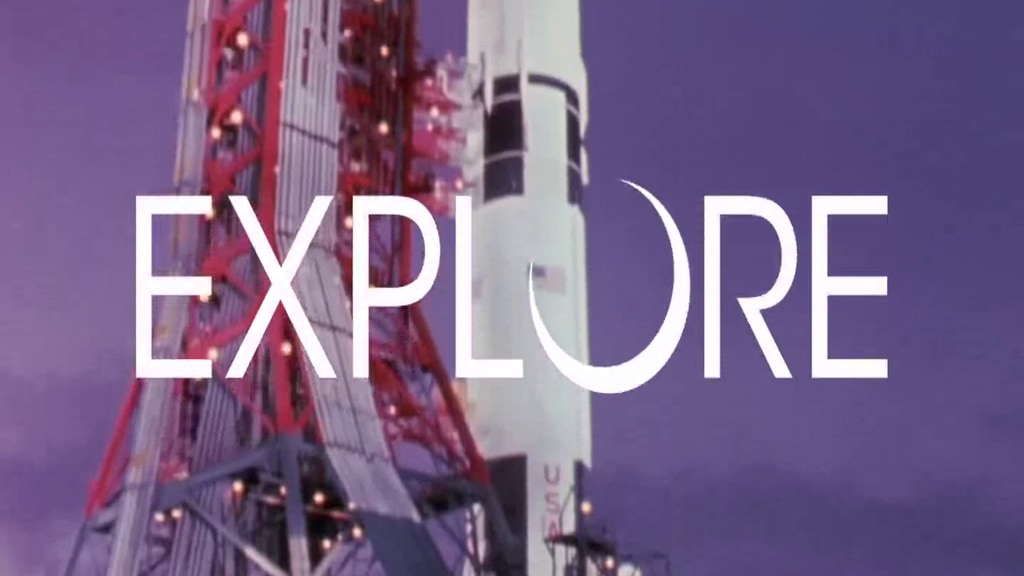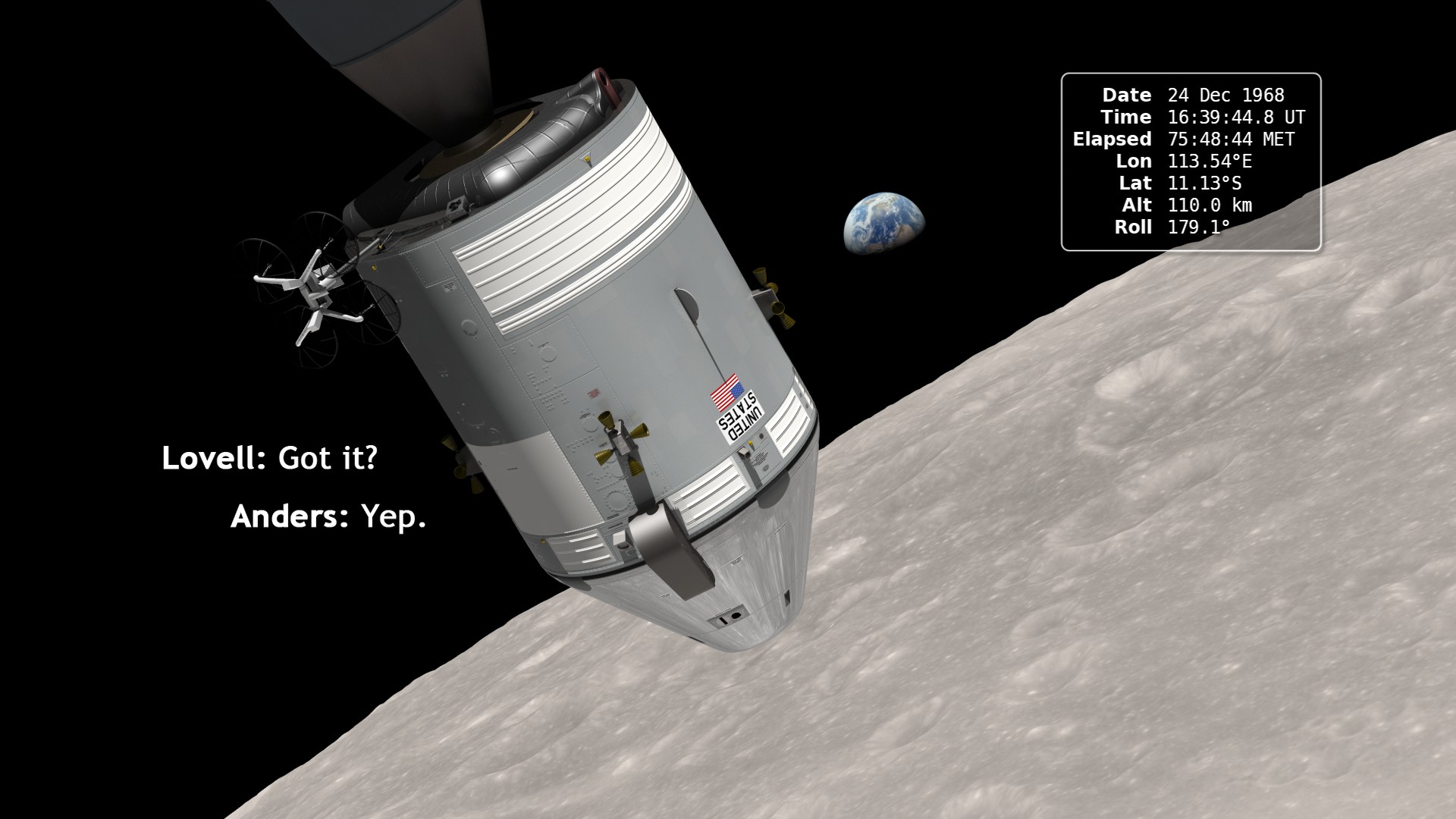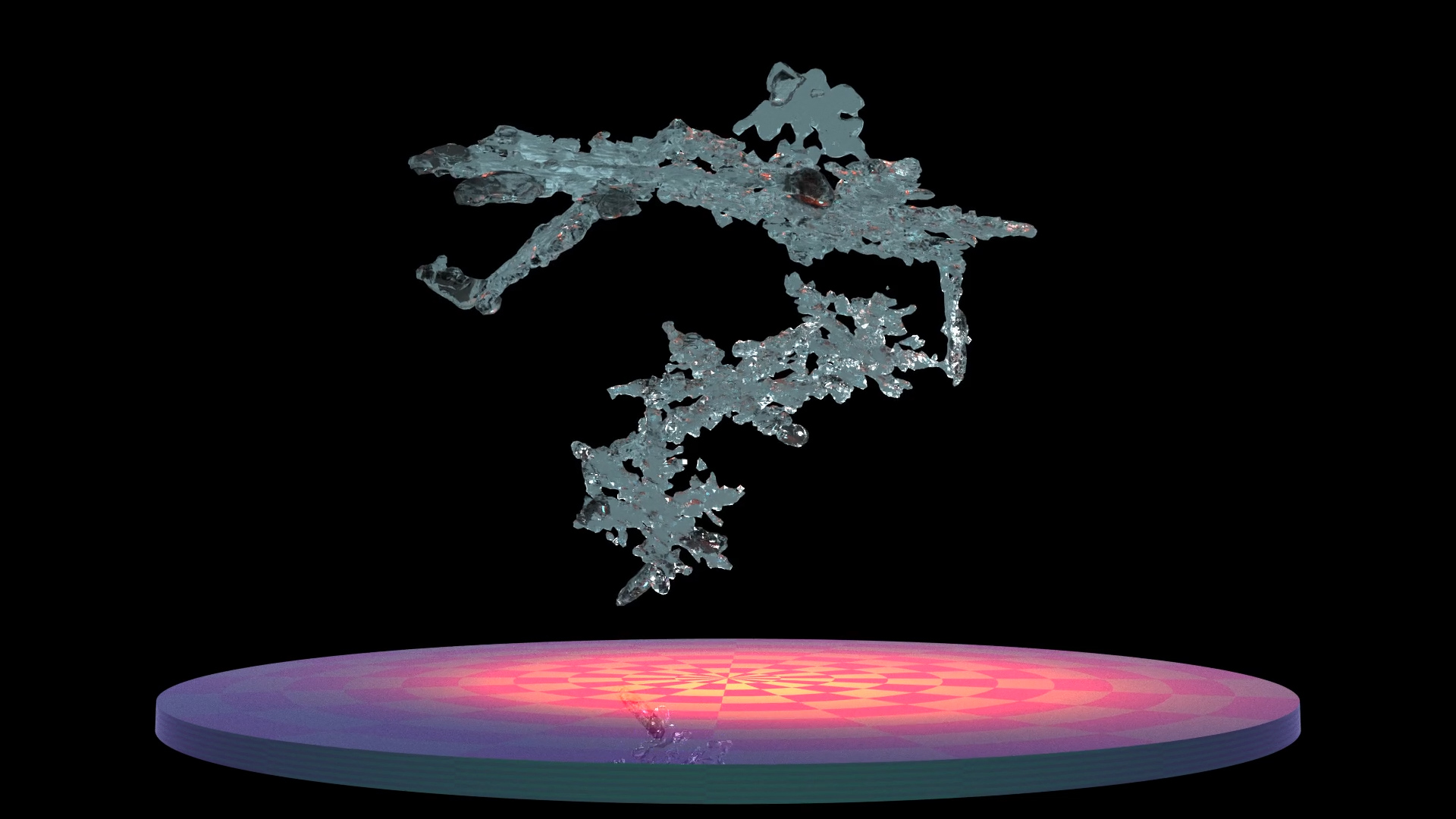Earthrise in 4K
On December 24, 1968, Apollo 8 astronauts Frank Borman, Jim Lovell, and Bill Anders became the first humans to witness the Earth rising above the moon's barren surface. Now we can relive the astronauts' experience, thanks to data from NASA's Lunar Reconnaissance Orbiter. Complete transcript available.
Watch this video on the NASA Goddard YouTube channel.
This is a new, ultra-high definition (UHD, or 4K) version of the Earthrise visualization first published in 2013.
In December of 1968, the crew of Apollo 8 became the first people to leave our home planet and travel to another body in space. But as crew members Frank Borman, James Lovell, and William Anders all later recalled, the most important thing they discovered was Earth.
Using photo mosaics and elevation data from Lunar Reconnaissance Orbiter (LRO), this video commemorates Apollo 8's historic flight by recreating the moment when the crew first saw and photographed the Earth rising from behind the Moon. Narrator Andrew Chaikin, author of A Man on the Moon, sets the scene for a three-minute visualization of the view from both inside and outside the spacecraft accompanied by the onboard audio of the astronauts.
The visualization draws on numerous historical sources, including the actual cloud pattern on Earth from the ESSA-7 satellite and dozens of photographs taken by Apollo 8, and it reveals new, historically significant information about the Earthrise photographs. It has not been widely known, for example, that the spacecraft was rolling when the photos were taken, and that it was this roll that brought the Earth into view. The visualization establishes the precise timing of the roll and, for the first time ever, identifies which window each photograph was taken from.
Two craters visible in the Earthrise image, formerly called Pasteur T and Ganskiy M, were renamed Anders' Earthrise and 8 Homeward by the International Astronomical Union to commemorate the 50th anniversary of the Apollo 8 mission.
An external view of the spacecraft as the Earth rises in the distance. The first frame corresponds to 10:37:19 a.m. Central Standard (Houston) Time, 16:37:19.0 Universal Time, and 75:46:19.0 Mission Elapsed Time. The frames cover an elapsed time of exactly three minutes. This frame set and several of the others are synchronized in time.
An idealized view of Earth rising above the lunar terrain, using a focal length similar to the telephoto lens used for the Earthrise photographs. For the 1920 × 1080 frame set, the first frame corresponds to 75:47:06 MET, which is 47 seconds (1410 frames) later than the other synchronized frame sets. The 3840 × 2160 frame set covers the full three-minute interval starting at 75:46:19 MET.

The three Earthrise photographs, scaled and rotated to match the telephoto view of the preceeding frame set. They correspond to frames 1092, 2814, and 3545 of the 1920 × 1080 frames, and to frames 2502, 4224, and 4955 of the 3840 × 2160 frames. The original photographs are AS08-13-2329, AS08-14-2383, and AS08-14-2384.
A nadir view of the lunar surface, overlaid with Apollo 8 vertical stereo photographs. This frame set is synchronous with others that begin at 75:46:19 MET. It shows photos AS08-12-2135 through AS08-12-2144 on magazine D.
The wide-angle view of the Moon and Earth through the right side window (window 5). These frames are synchronous with others that begin at 75:46:19 MET. The 1920 × 1080 frame set is partial, covering frames 2000 through 3800. The 3840 × 2160 frame set is complete.
The wide-angle view of the Moon and Earth through the right rendezvous window (window 4). These frames are synchronous with others that begin at 75:46:19 MET. The 1920 × 1080 frame set is partial, covering frames 3600 to 5400. The 3840 × 2160 frame set is complete.
The wide-angle view of the Moon and Earth through the hatch window (window 3). These frames are synchronous with others that begin at 75:46:19 MET.
The window border for the right rendezvous window (window 4).
The window border for the right side window (window 5).

The window border for the hatch window (window 3).
The head-up display of the time and the position and orientation of the spacecraft. These frames are synchronous with others that begin at 75:46:19 MET.
A nose-on view of the spacecraft as it begins to roll. This highlights the positions of the windows relative to the roll direction. The frames are synchronous with other frame sets that begin at 75:46:19 MET, but the coverage is partial, from frame 540 to 900.
A view of the spacecraft during an early orbit, showing that the windows faced away from Earth.
Through high thin clouds, a naked-eye view of the Moon from Earth on December 24, 1968. The Moon is a waxing crescent in the constellation Aquarius.
A telescopic view of the Moon from Earth as the spacecraft emerges from the far side. The position of the CSM is represented by a white dot, but the spacecraft could not be seen in even the most powerful telescopes.
The lunar terrain rolls beneath the camera as it chases the spacecraft, seen from a great distance.
A nose-on animated illustration of the command module showing the positions of the five windows. From left to right, the windows are numbered in descending order from 5 to 1.
A view of the rolling spacecraft used in the video to call out the windows in which the Earth is visible.
Credits
Please give credit for this item to:
NASA's Scientific Visualization Studio
-
Visualizer
-
Ernie Wright
(USRA)
-
Ernie Wright
(USRA)
-
Producers
-
Ernie Wright
(USRA)
- Andrew Chaikin
- Dan Gallagher (USRA)
- Noah Petro (NASA/GSFC)
-
Ernie Wright
(USRA)
-
Video editors
- Dan Gallagher (USRA)
- Michael Randazzo (Advocates in Manpower Management, Inc.)
-
Scientists
- Noah Petro (NASA/GSFC)
- John Keller (NASA/GSFC)
- Richard Vondrak (NASA/GSFC)
-
Narrator
-
Narration
-
Associate producer
- David Ladd (USRA)
-
Technical support
- Laurence Schuler (ADNET Systems, Inc.)
- Ian Jones (ADNET Systems, Inc.)
Missions
This page is related to the following missions:Series
This page can be found in the following series:Datasets used
-
Blue Marble [Terra: MODIS]
ID: 492Credit: The Blue Marble data is courtesy of Reto Stockli (NASA/GSFC).
See all pages that use this dataset -
DEM (Digital Elevation Map) [LRO: LOLA]
ID: 653 -
Apollo 8 Trajectory Reconstruction
ID: 735This dataset can be found at: http://ntrs.nasa.gov/archive/nasa/casi.ntrs.nasa.gov/19740072902_1974072902.pdf
See all pages that use this dataset -
LROC WAC Color Mosaic (Natural Color Hapke Normalized WAC Mosaic) [Lunar Reconnaissance Orbiter: LRO Camera]
ID: 1015This natural-color global mosaic is based on the 'Hapke normalized' mosaic from LRO's wide-angle camera. The data has been gamma corrected, white balanced, and range adjusted to more closely match human vision.
See all pages that use this dataset
Note: While we identify the data sets used on this page, we do not store any further details, nor the data sets themselves on our site.
Release date
This page was originally published on Friday, December 21, 2018.
This page was last updated on Sunday, January 5, 2025 at 11:23 PM EST.



![Watch this video on the NASA Goddard YouTube channel.Complete transcript available.Music credits: “Boreal Moment” by Benoit Scarwell [SACEM]; “Sensory Questioning”, “Natural Time Cycles”, “Emerging Designer”, and “Experimental Design” by Laurent Dury [SACEM]; “Superluminal” by Lee Groves [PRS], Peter George Marett [PRS] from Killer Tracks](/vis/a010000/a013200/a013275/13275_AstronautRadiation_Twitter.01205_print.jpg)
